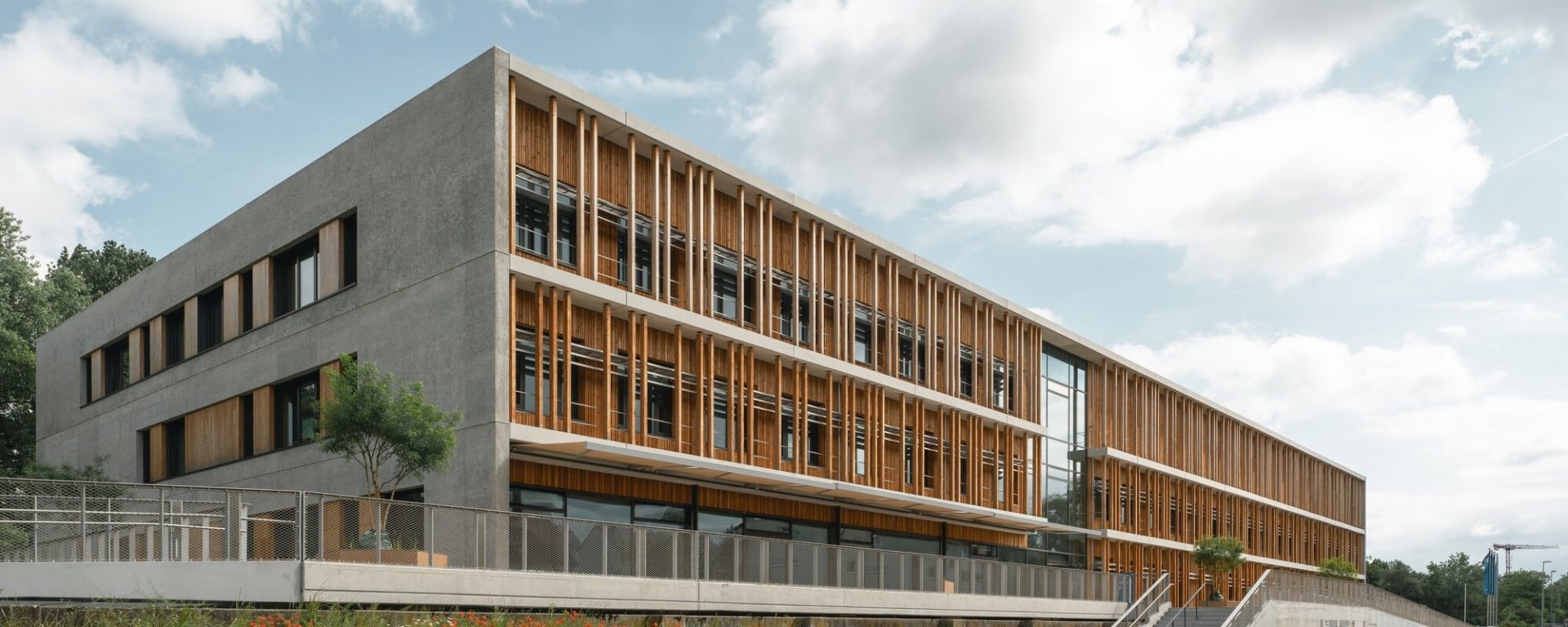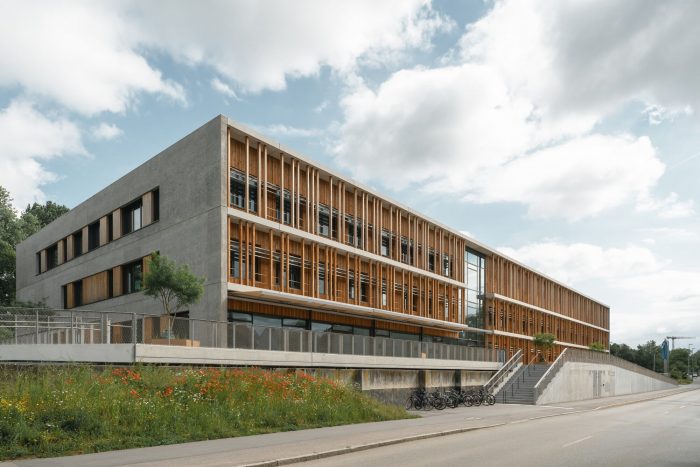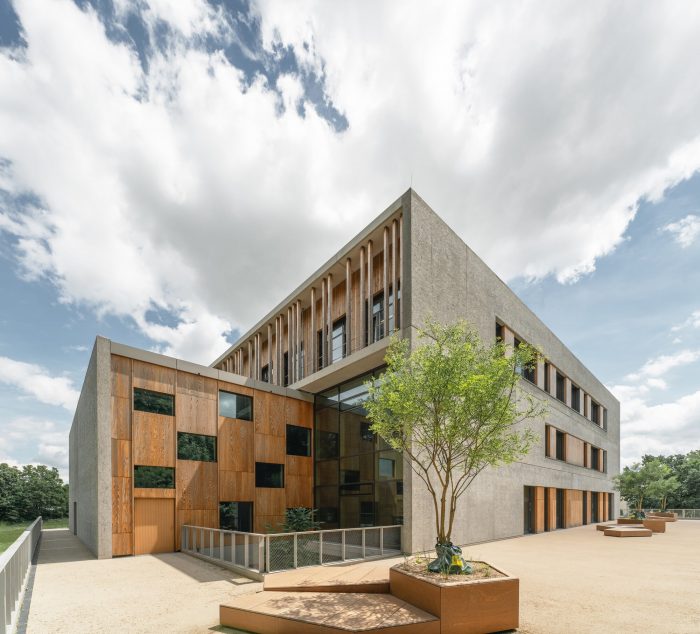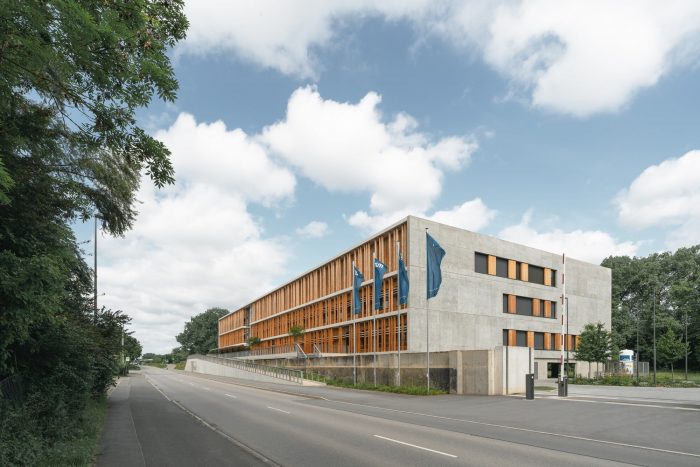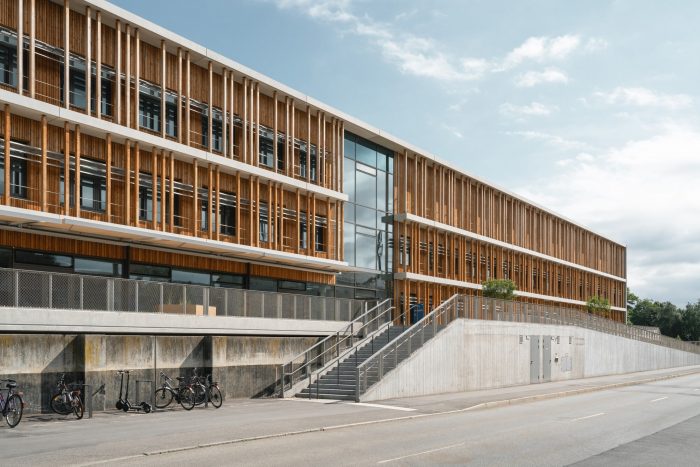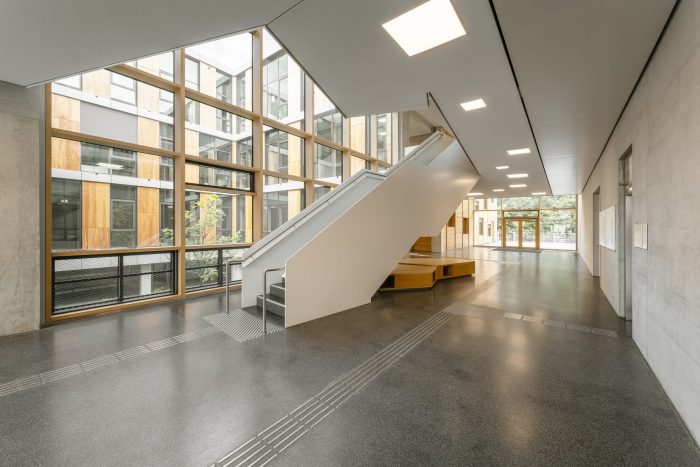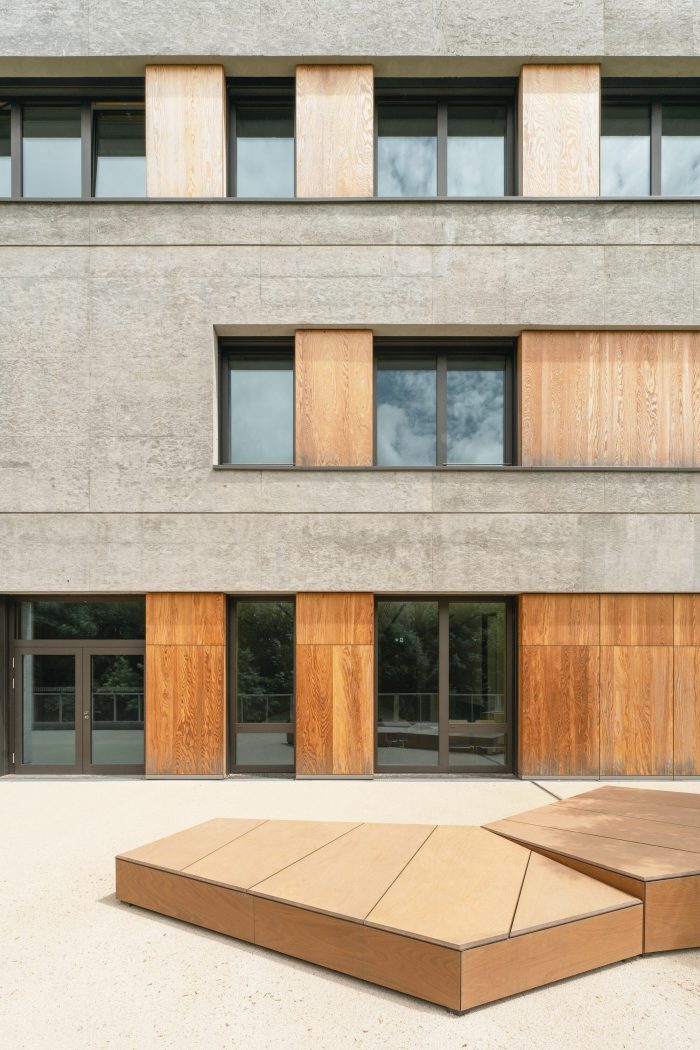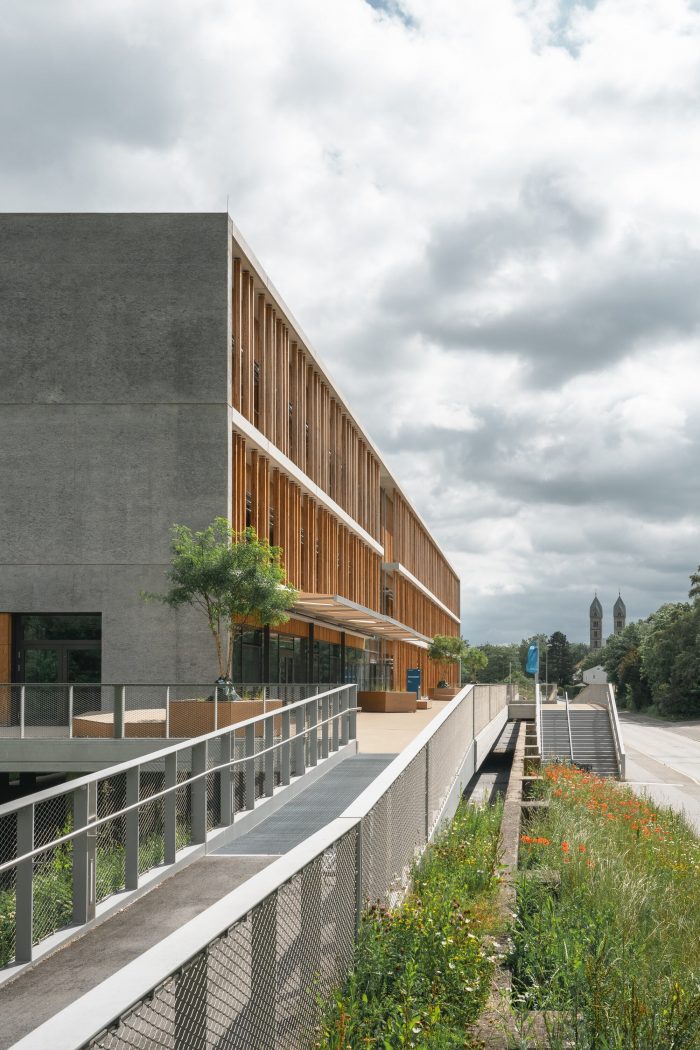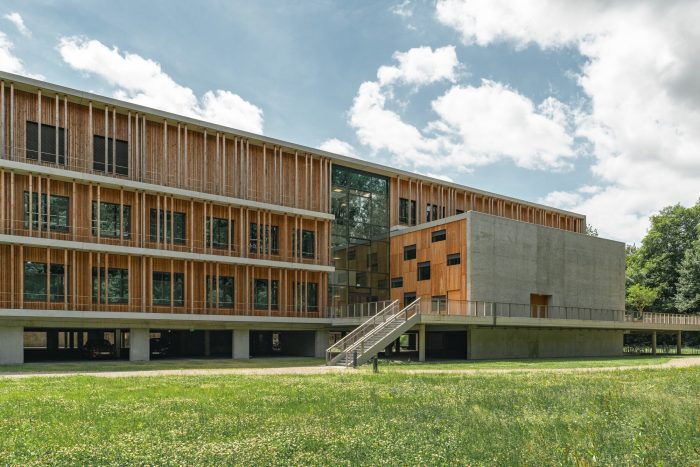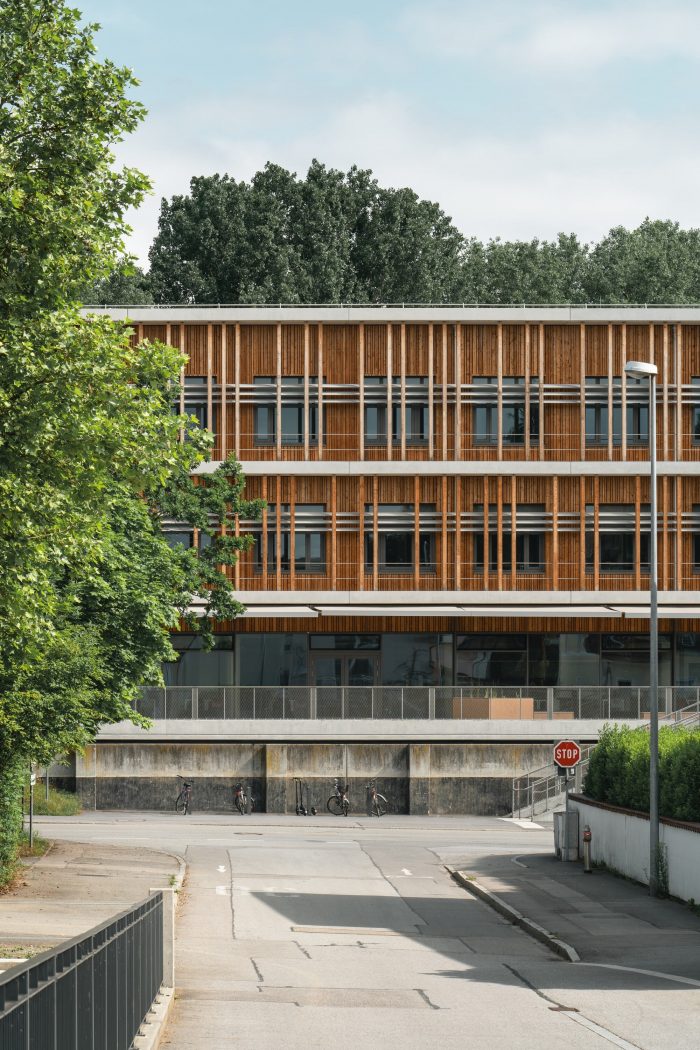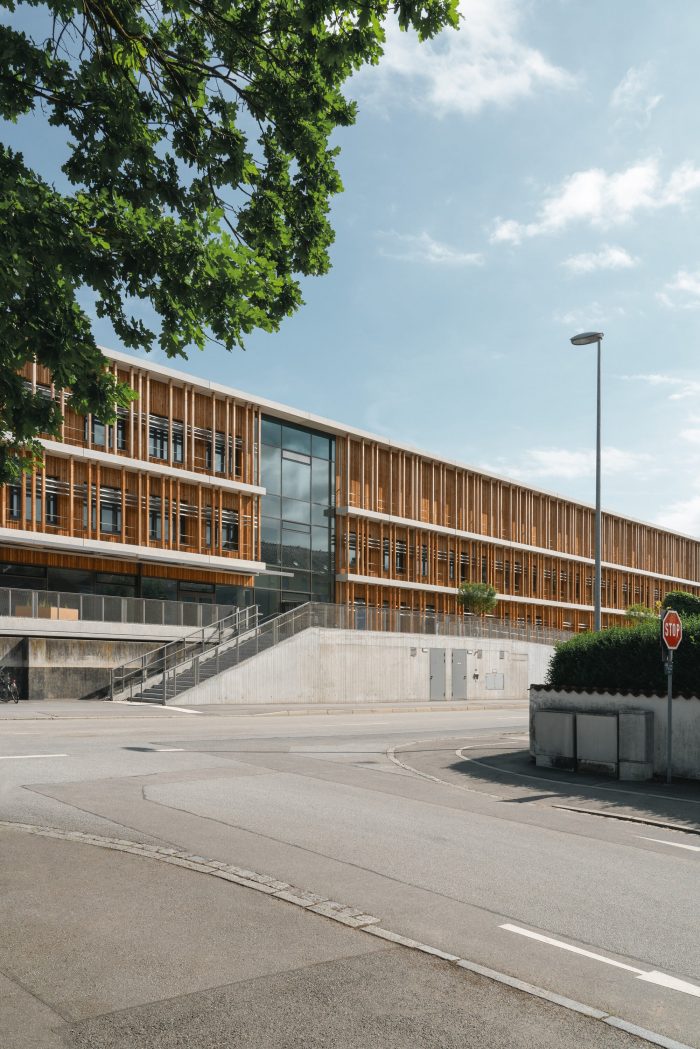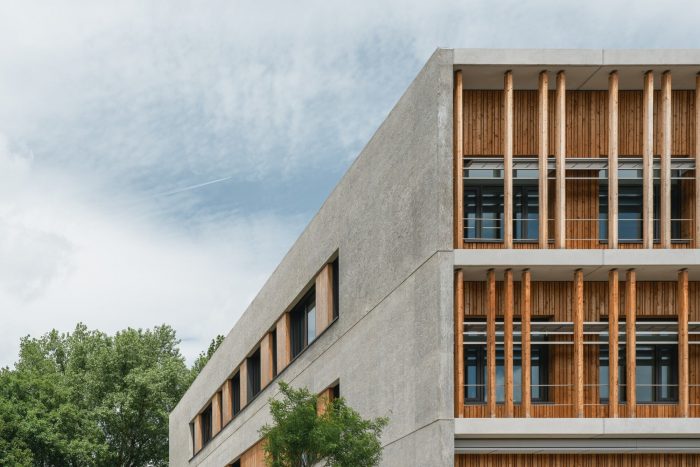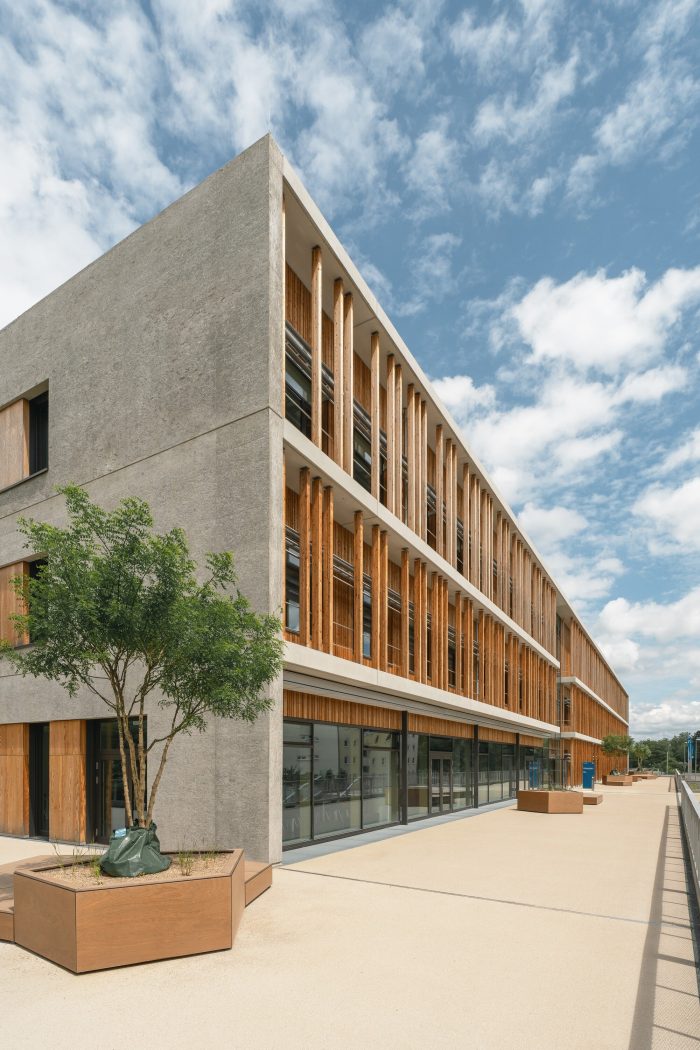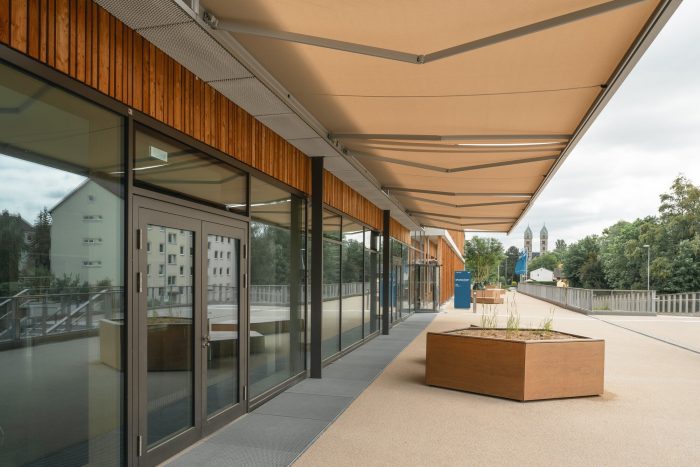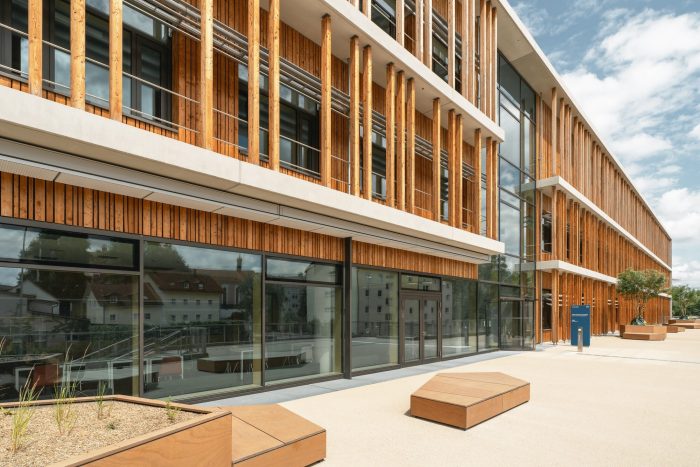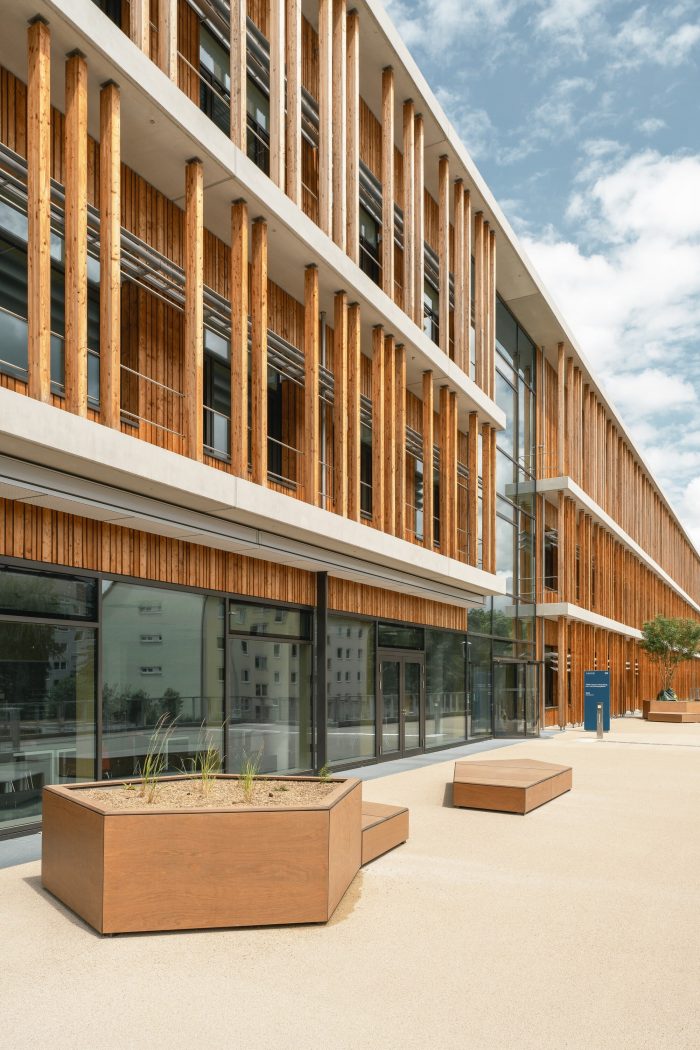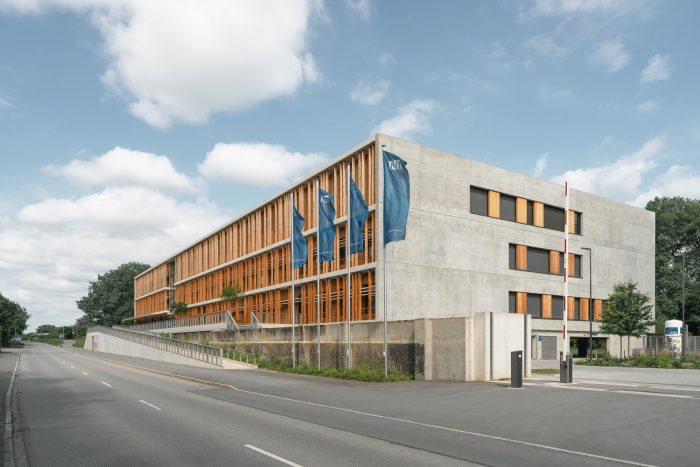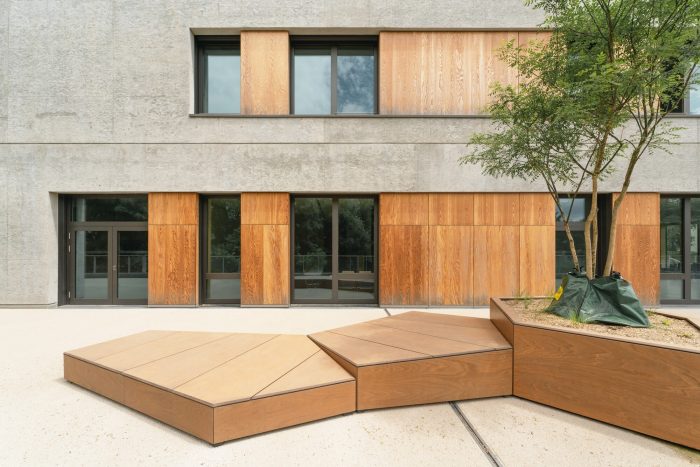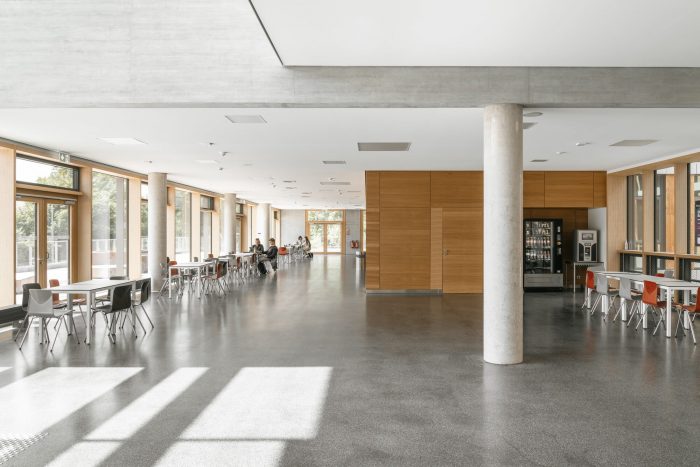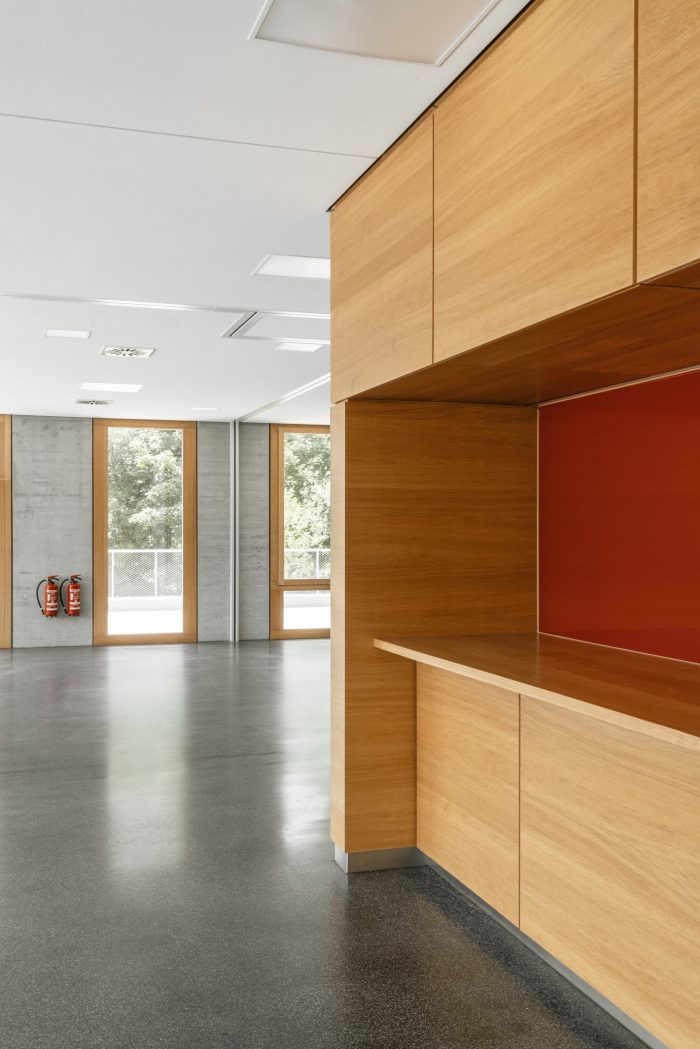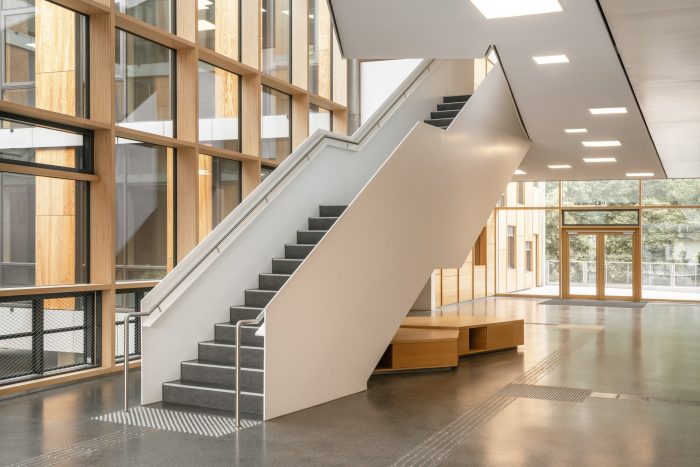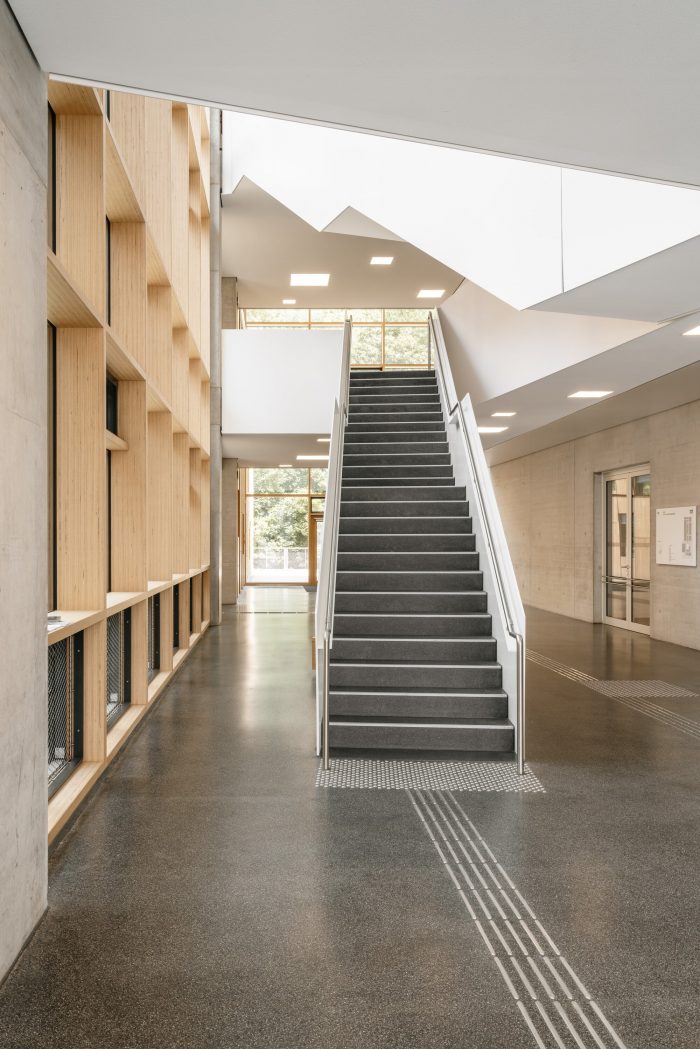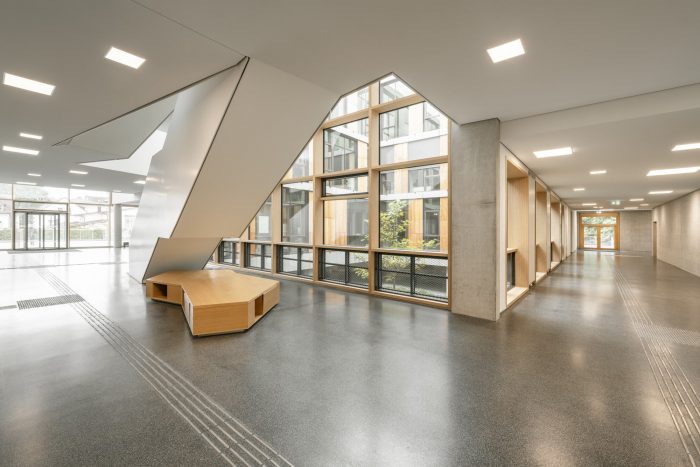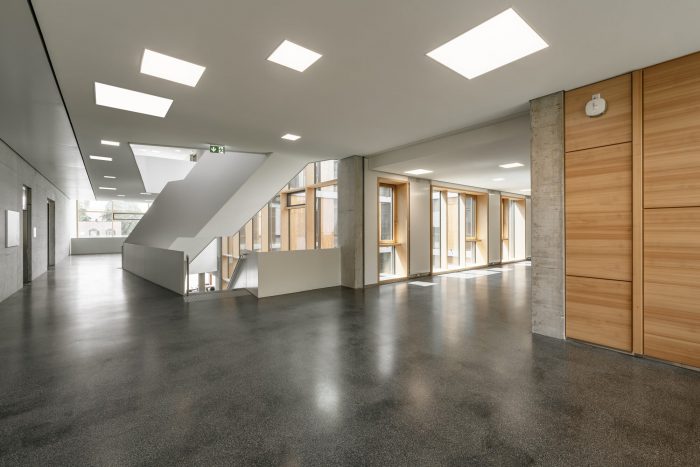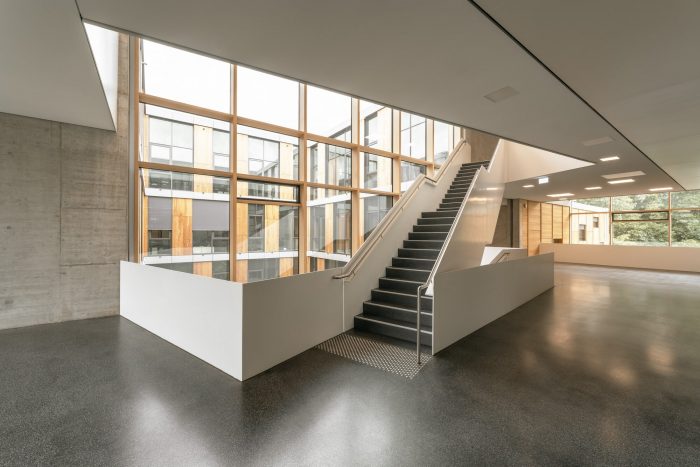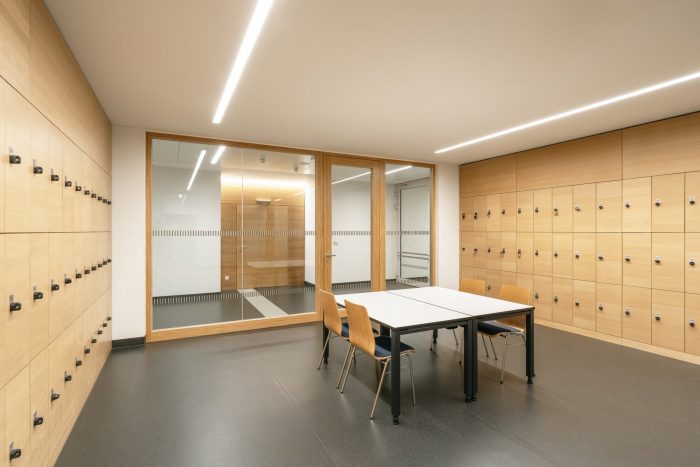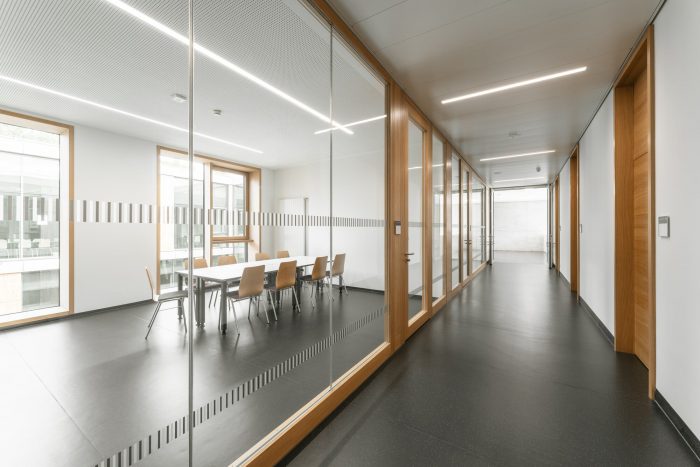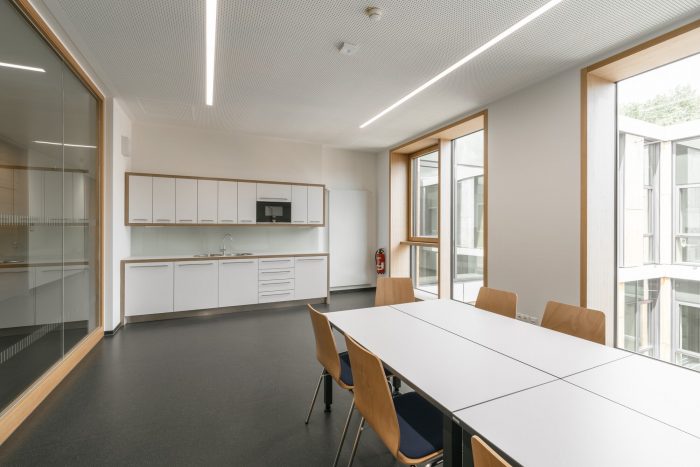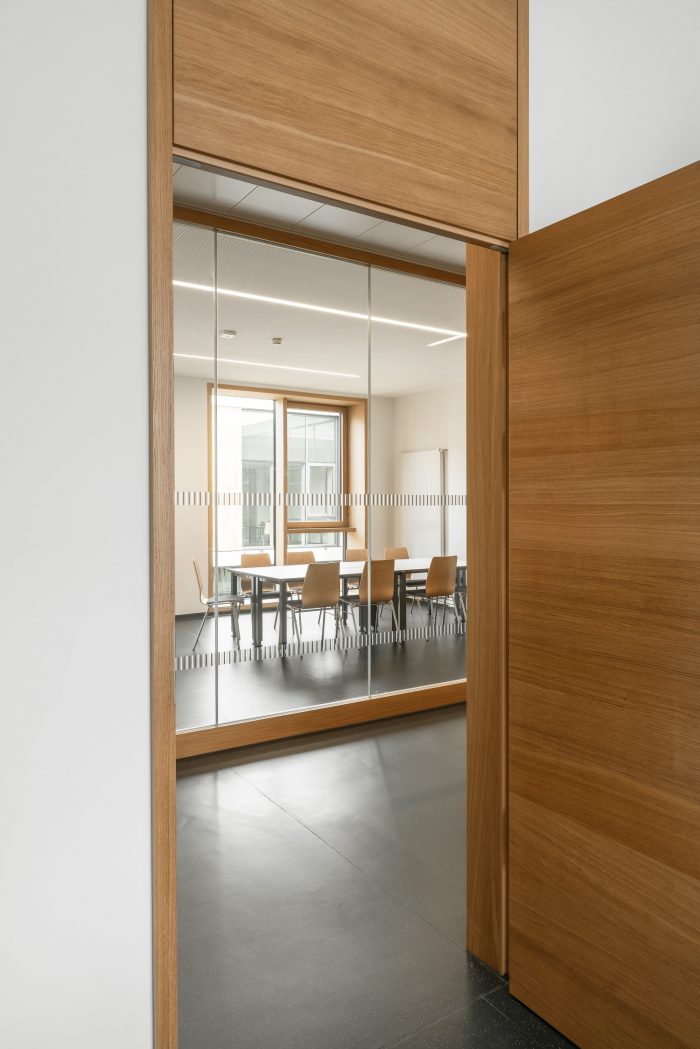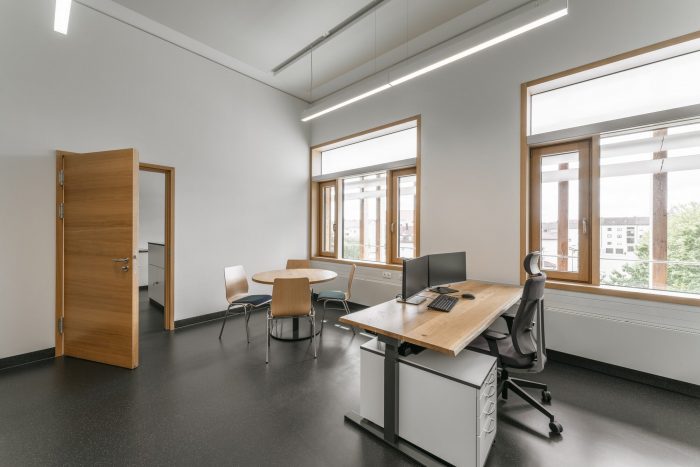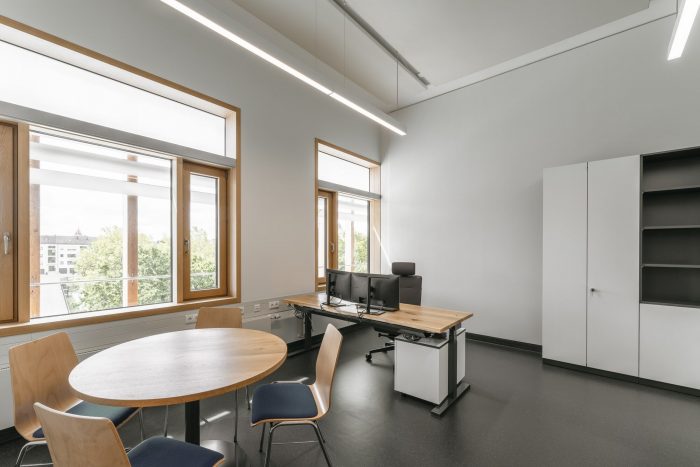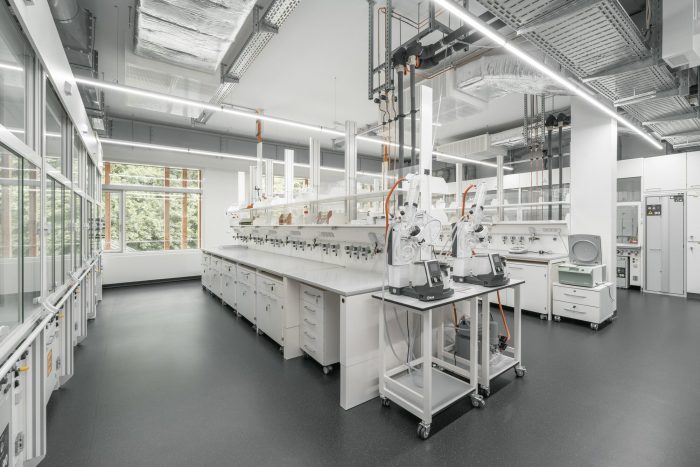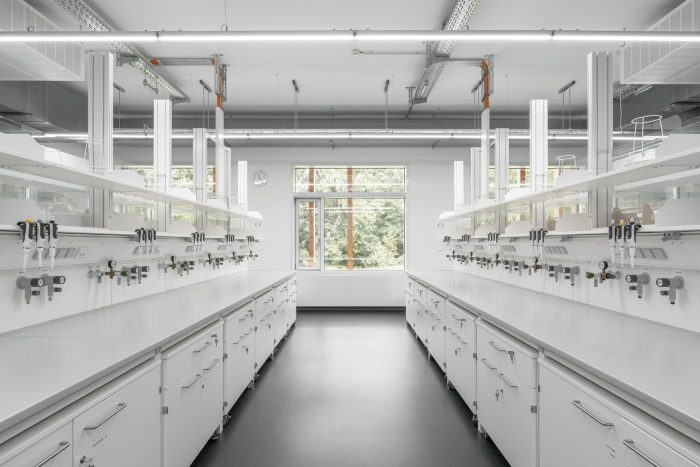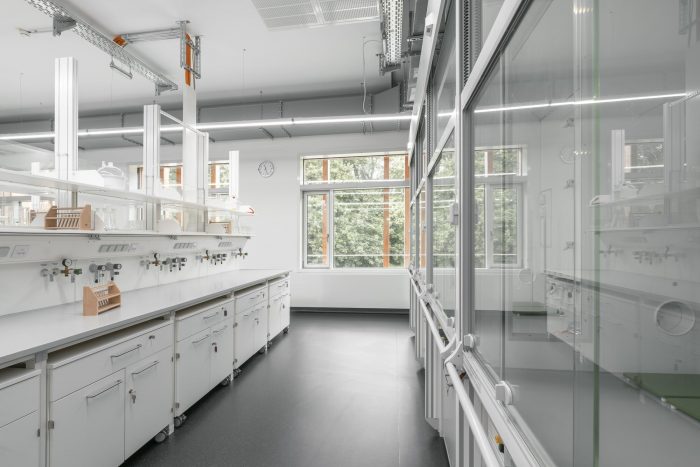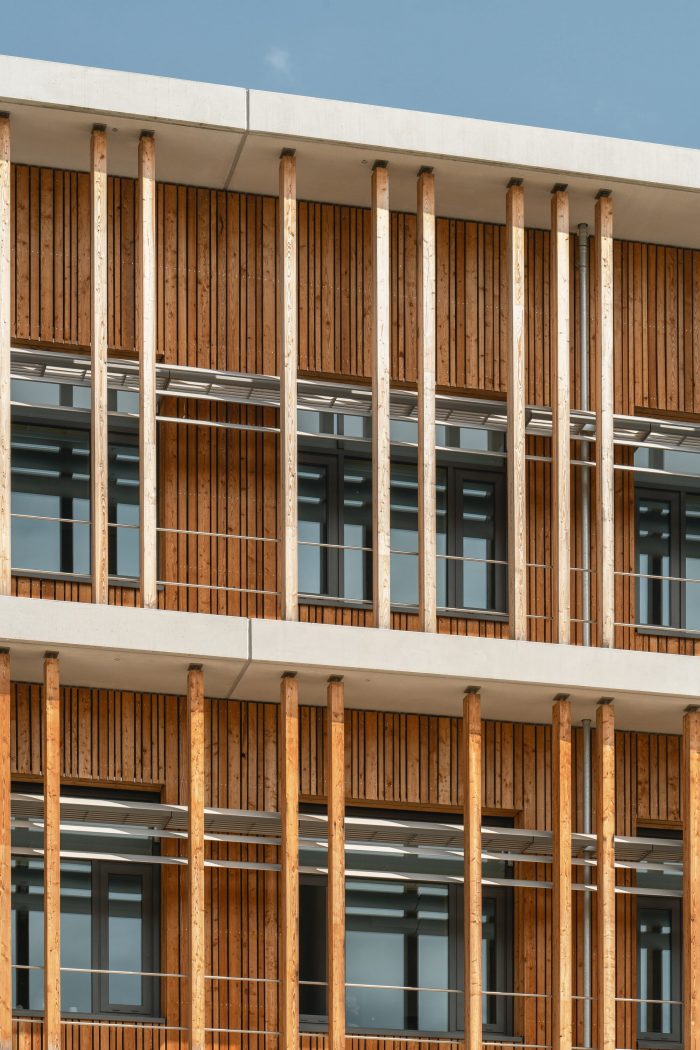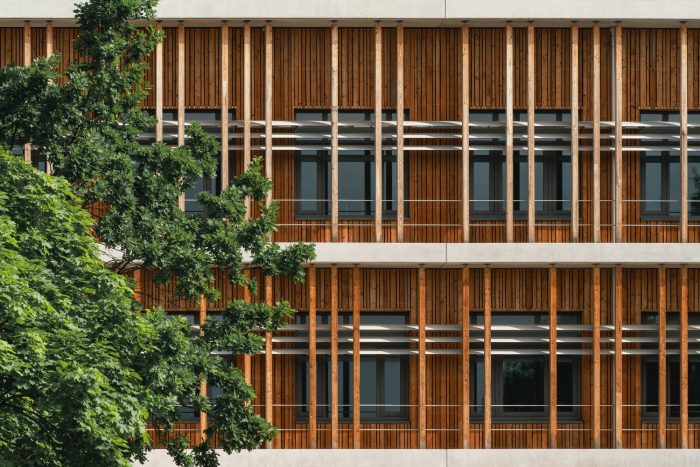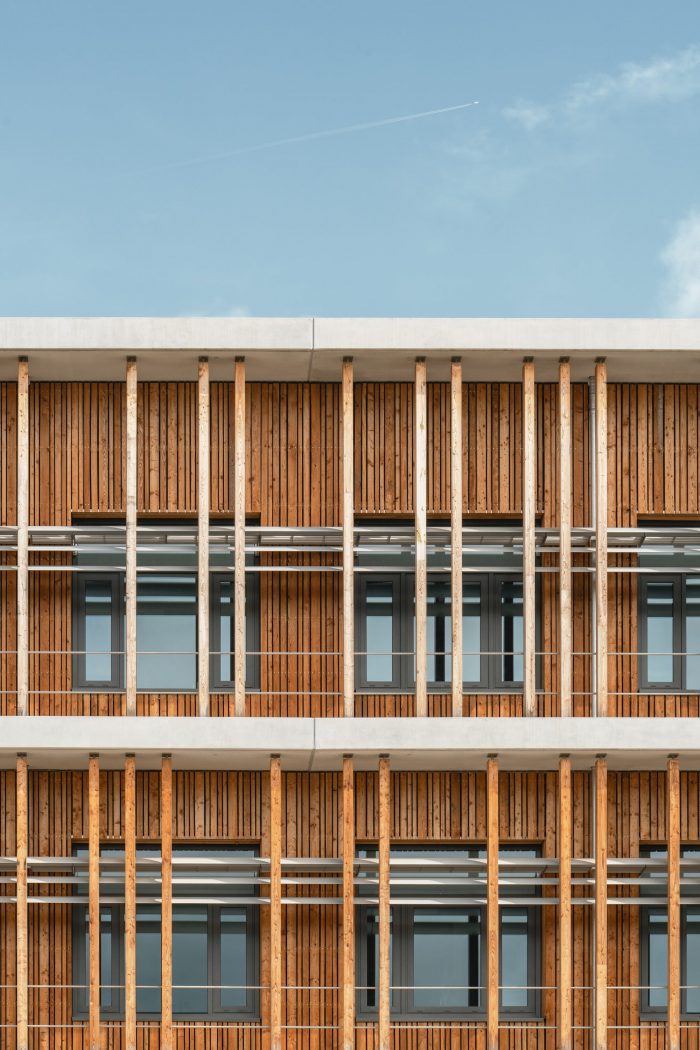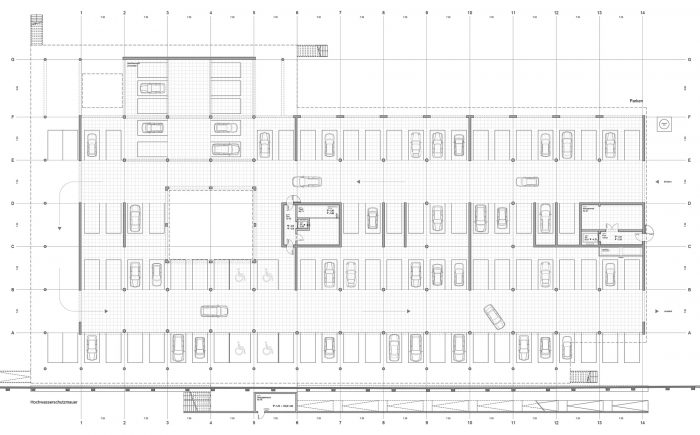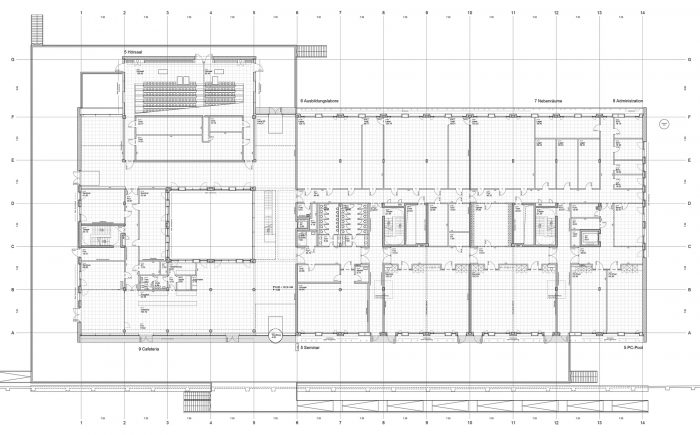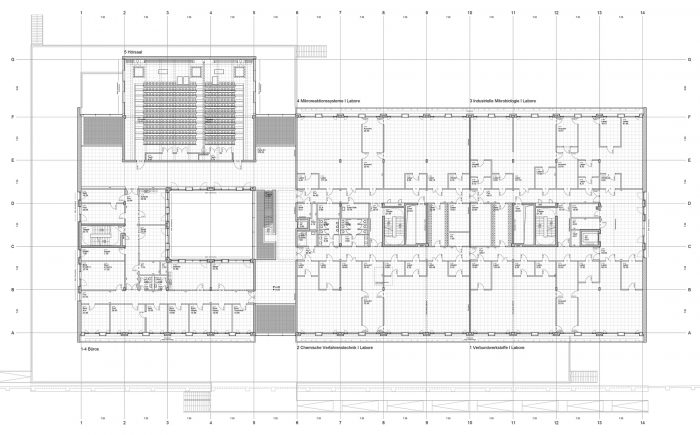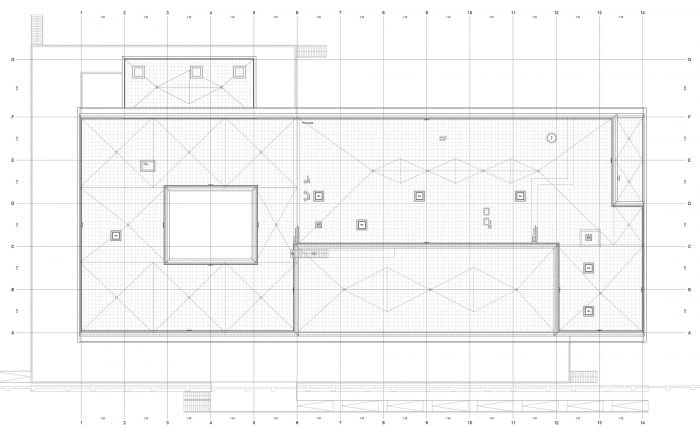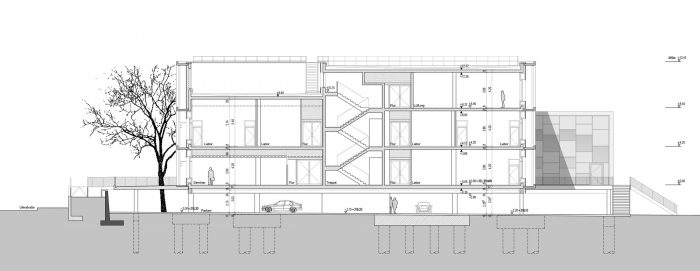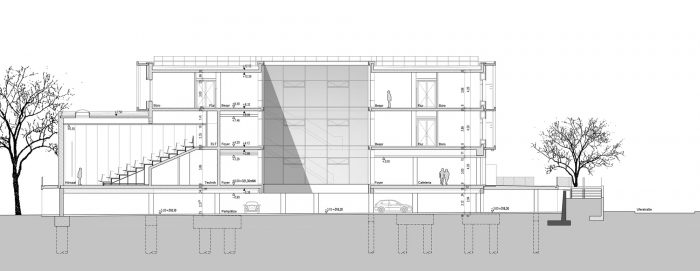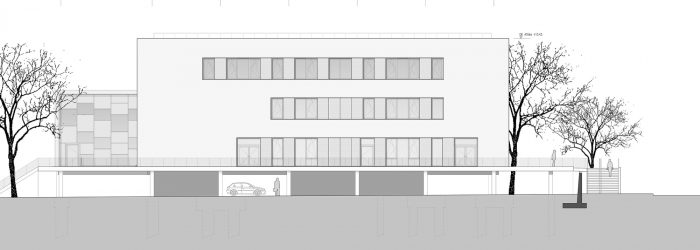Nachhaltige Chemie是一座用于可持续化学研究和教育的新建筑,它扩大了Münchens大学Straubing校区的科学中心,形成了校区的北部入口。这座修长的三层建筑与码头平行,位于防洪墙后面和多瑙河洪水泛滥区域内,因此用高跷抬高到离地面3米。
Nachhaltige Chemie, the new building for research and education in sustainable chemistry expands the Technische Universität Münchens Campus Straubing science center, forming the northern entrance to the campus. The elongated three-story building lies parallel to the quayside, behind the flood wall and within the flooding zone of the river Donau, thus elevated on stilts to 3 meters above the ground.
入口通过第一层的高架平台到达,该平台在防洪墙的高度上围绕建筑的大部分。从这里,建筑通过中央大厅进入,这是一个由画廊和开放式楼梯组成的三层楼。这个交流的纽带将建筑组织成一个西翼和一个东翼。一个从主结构向河岸突出的礼堂进一步突出了建筑的特点。
The entrance is reached via an elevated deck at the first level that spans around most of the building at the height of the flood wall. From here, the building is entered through the central hall, a three-story composition of galleries and open stairs. This communicative nexus organizes the building into a western and an eastern wing. An auditorium that protrudes from the main structure towards the riverbanks further accentuates the building.
高架的第一层主要包含教育功能,而高层则包含办公室、研究实验室和技术工程空间。在第一层,大型的、可分割的礼堂被安置在北部多瑙河的方向。一楼的西南部是一个供学生和讲师使用的食堂,在主入口附近有一个室外座位区。大楼的西部是不同规模的讲座和研讨会空间,东部是教育实验室、第二个较小的礼堂以及行政办公室。
While the elevated first floor mainly contains educational functions, the upper floors contain offices, research laboratories, and technical engineering spaces. On the first floor, the large, divisible auditorium is positioned towards the river Donau in the north. The southwestern part of the first floor is occupied by a cafeteria for students and lecturers with an outdoor seating area near the main entrance. Lecture- and seminar spaces of different sizes are organized within the western part of the building, educational laboratories, a second, smaller auditorium as well as administrative offices are found in the eastern part.
二楼的东部包括研究实验室,这些实验室被规划为灵活的单元。南部的实验室道有一个升高的天花板。所有的实验室都朝外,内部区域被楼梯、技术和辅助空间占据,就像一楼一样。另一方面,二楼的西部包含了通往大型可分割礼堂的上部入口。办公室、休息室、会议室和其他员工空间位于二楼和三楼,并围绕着西翼的一个庭院。三楼的东部包含了电气、暖通空调和其他中央技术单位的主要房间。在建筑的第一层和平台下面,有一个停车区,在可能发生的洪水事件中必须清理出来。
The eastern part of the second floor contains research laboratories that are planned as flexible units. The southern laboratory tract has a raised ceiling. All laboratories face outwards, the inner zone is occupied by staircases, and technical and auxiliary spaces, just like on the first floor. The western part of the second floor on the other hand contains the upper entrances to the large, divisible auditorium. Offices, lounges, conference rooms, and other staff spaces are situated on the second and third floors and are grouped around a courtyard in the western wing. The eastern part of the third floor contains the main rooms for electrical, HVAC, and other central technical units. Below the building’s first level and deck, there is a parking area that has to be cleared during possible flooding events.
木材、玻璃和混凝土使建筑物的外墙与众不同。大部分的建筑材料都是以可持续方式采购的。纵向的外墙是用木材框架建造的,东面和西面的墙是由整体的绝缘混凝土制成。部分植被的屋顶包含朝南的光伏元件。
Wood, glass, and concrete give distinction to the facades of the buildings. Most of the building materials were sourced sustainably. The longitudinal outer walls were constructed in timber frames, the eastern and western walls are made of monolithic insulating concrete. The partially vegetated roof contains south-facing photovoltaic elements.
Architects: Schuster Pechtold Schmidt Architekten
Area : 9500 m²
Year : 2021
Photographs :Felix Meyer
Manufacturers : Fural, Nora, Pollmeier, RAICO, Schörghuber, Schüco, Steico, Warema, Heidelberger Beton (Heidelberg Cement), Topakustik Acoustic Wall Panel
Landscape Architects : Hinnenthal Schaar
Electrical Consultants : Rücker + Schindele
HVAC Consultants : Climaplan
Structural Engineering Company : ISP Scholz
Civil Engineering : MKS Architekten – Ingenieure
Acoustics Consultants : Hook Farny Ingenieure
Thermal Engineering : IFB Ingenieure
Design Team Leader : Christian Volles
Project Architects : Robert Bogner, Matthias Schmidt, Adriana Lopez Perez
Laboratory Consultant : Dr Heinekamp
City : Straubing
Country : Germany

